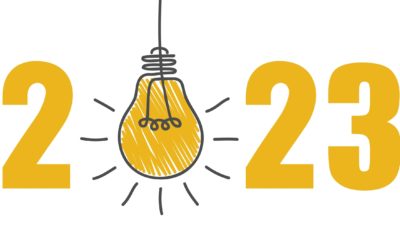Visual content is a powerful component of social media marketing. Eighty-two percent of marketers cite images as important or very important to social media content optimization, and 52 percent believe video content produces the best ROI.
But with so many networks available and new options cropping up regularly, deciding where to focus your efforts can be a struggle. To alleviate the stress and confusion, we’ve put together a guide covering four of the top visual social media networks available today: Instagram, Pinterest, and Snapchat.
Created in 2010 and purchased by Facebook in 2012, Instagram is a mobile app and social media service dedicated to photo and short video sharing. With over 400 million monthly active users, Instagram boasts 80 million photos shared daily and over 40 billion shared overall. That’s a lot of sharing!
If you’re wondering who’s using Instagram, we’ve got the answer. Twenty-eight percent of the online adult population (31 percent of women and 24 percent of men), and 59 percent of those users visit the app daily! Demographically, Instagram is used by:
- 55 percent of online adults between the ages of 18 and 29 years old
- 28 percent of online adults between the ages of 30 and 49 years old
- 15 percent of online adults who are 50 years old or up
Until a July 2015 update, users were limited to posting square photos that were only 640 by 640 pixels. Now users can post larger 1080 x 1080-pixel photos for a higher quality experience. Better still, Instagram has enabled full-size portrait and landscape orientation for photo and video content.
Now for the larger question: Can your business benefit from Instagram? The answer, of course, depends on how you leverage the platform, but Instagram is definitely a place where your business could thrive. Let’s consider a couple of ideas.
Promotional giveaways are right at home on Instagram. Post a photo announcing the contest and prize, then ask followers to repost the photo using a brand-specific hashtag. You can then use the hashtag to track the results and pick a winner.
Not only does this type of promotion engage your audience, but it also expands your reach as followers share your content with their connections.
Customer testimonials are another made-for-Instagram proposition. Ask followers to post photos and videos of themselves using your products, again using a brand-specific hashtag. This not only expands your reach (for free), but it also gives a practical demonstration of product value. And it’s fun!
Partnering with more popular social profiles has allowed some brands to generate massive revenue. Uwheels, the first self-balancing scooter outfitted with dual gyros, tapped popular Instagram models and celebrities to get the word out. Before they knew it, the company had generated over $1 million in gross sales.
Bonus Tips:
- Expand on visual content using captions and emojis, and tag other users or use @mentions.
- Hashtags are huge. You can use up to 30 per post, but a targeted, less-is-more strategy works better for a higher quality response.
- Geotagging displays the location of your photo and creates a photo map of all geotagged posts. This can be especially beneficial for location-based businesses like real estate.
- Instagram is slowly rolling out an advertising program to select brands, and results have been encouraging. Recall from sponsored posts was 2.8 times higher than Neilsen norms. Just something to think about down the road.
Pinterest is a social media platform that allows users to curate virtual collections of content. It was launched in 2010 as an invitation-only, closed-beta model, but opened to the public in August of 2012. Since then, it’s grown by leaps and bounds:
- Pinterest surpassed the 10-million-user mark faster than any standalone site in history.
- It was the fastest growing social network of 2014 at a rate of 97 percent.
- Recently, Pinterest reported an average of 100 million monthly users.
Thirty-one percent of the adult population on the Internet uses Pinterest (44 percent of women, 16 percent of men), spending an average of 14.2 minutes pinning with each visit. Twenty-seven percent of those users visit the site daily. Demographically, Pinterest has a relatively even spread:
- 37 percent of online adults between the ages of 18 and 29 years old
- 36 percent of online adults between the ages of 30 and 49 years old
- 40 percent of online adults who are 50 years old or up
Basically, Pinterest allows users to create themed bulletin boards where they can pin desirable content. The range of content is limitless — photos of celebrities, how-to articles, exercise tips, product images, popular memes. If you can search for it, you can pin it and collect it.
Pinterest can be an interesting playground for businesses. Unlike Instagram, Pinterest offers a (free) dedicated business account, which provides added features such as analytics and rich pins. Rich pins allow you to provide additional information with each pin, some of which can be extremely beneficial to your marketing efforts.
Here are three business-friendly examples:
Place pins — With this option, you can turn your board into an interactive map, showing the geographic location of each individual pin. As with Instagram’s photo map feature, this can be perfect for location-based businesses or if you need to include important contact information, such as addresses and phone numbers.
Article pins — When you post written content to Pinterest, users only see the included photo; it’s up to them to click through. Wouldn’t the odds of success go up if you could include the article headline and a brief description? That’s what article pins are for!
Products pins — This is a perfect way to drive traffic to your online store. Product pins give real-time notifications, keeping users up to date on the latest pricing and purchasing options. Many users create wish lists on Pinterest, so a pin today could be a sales conversion tomorrow. Businesses often create their own gift guides to make shopping that much easier for their audience.
In addition to pinning great content, it’s important to organize your business boards in a logical, user- and search-friendly manner. Keywords should be search friendly and relevant to your target audience. And don’t forget to choose eye-catching cover photos for each board!
Bonus Tips:
- Pinterest works like a search engine, often giving older content a new lease on life. Repins extend this life even further, so you may see traffic for months after publication. If you have evergreen content, get it on the board!
- Add the Pin It widget to your website. When a customer sees pin-worthy content on your site, they can pin it immediately without leaving your webspace.
- Pinterest is now offering promoted pins. While the feature isn’t available to everyone just yet, you can join the waiting list.
Take a guided tour of social media with our quick reference guide!
Snapchat
If you’ve ever watched “Mission Impossible,” you’re likely familiar with self-destructing messages, and that’s Snapchat in a nutshell. Users can send captioned photos and videos, allowing recipients one to 10 seconds to view the content before it disappears. The idea is to keep conversations spontaneous and fun.
Snapchat was founded in September of 2011 and became an instant hit, so much so that Facebook attempted (and failed) to acquire the company. Snapchat is one of the fastest growing social networks, especially with the 25-and-under crowd. It’s the third leading social media app among 18- to 34-year-olds in terms of smartphone penetration, and it may be nearing 200 million active users. Sixty-five percent of those users contribute content daily.
Demographically:
- 45 percent of Snapchat users are 18 to 24 years old
- 26 percent of users are between the ages of 25 and 34 years old
- 13 percent of users are between the ages of 35 and 44 years old
- 16 percent of users are 45 years old or up
For businesses, Snapchat may feel a bit risky, but it’s an untapped world of potential, and there are some major players starting to take the field. Taco Bell entered the game early, joining back in 2013. They ran a great Valentine’s Day campaign earlier this year. Starbucks has been serving up fresh snaps since November 2014. And when Target announced they were ready to rock on Snapchat in February, they weren’t kidding; their debut story followed the Imagine Dragons to the Grammy Awards stage!
From a marketing perspective, the strongest Snapchat tool is the story feature, a sequential campaign of photos and/or videos that don’t disappear for 24 hours. This not only gives you room to work your magic, but it also allows users more time to view, review and digest your content.
If you’re wondering what you can possibly do to engage your customers in 10 seconds or less, here are a few ideas:
- Give them a behind-the-scenes look at your business.
- Show them around the office.
- Introduce your staff.
- Provide quick, fun facts and product information.
- Announce flash sales.
- Provide promotional coupons.
Remember, you have a very short time to deliver your value proposition, so you need to be quick and to the point. If your business doesn’t lend itself well to this type of marketing, Snapchat may not be the best place for you, especially if your target audience doesn’t fall firmly into the 18-to 34-year-old age bracket.
The Verdict
While each of these social media platforms shows potential for business marketing, you can’t be everywhere at once. In the end, what matters is where your target audience focuses their energy. Do the research, find your target and take aim with great visual content, whether it’s on Instagram, Pinterest, or Snapchat — or all of the above!
Become an expert on the big four social networks. Download our all-in-one guide today!


![Better Email Etiquette Equals Better Marketing Results [16 Rules]](https://www.outboundengine.com/wp-content/uploads/shutterstock_411184843-1-400x250.jpg)

